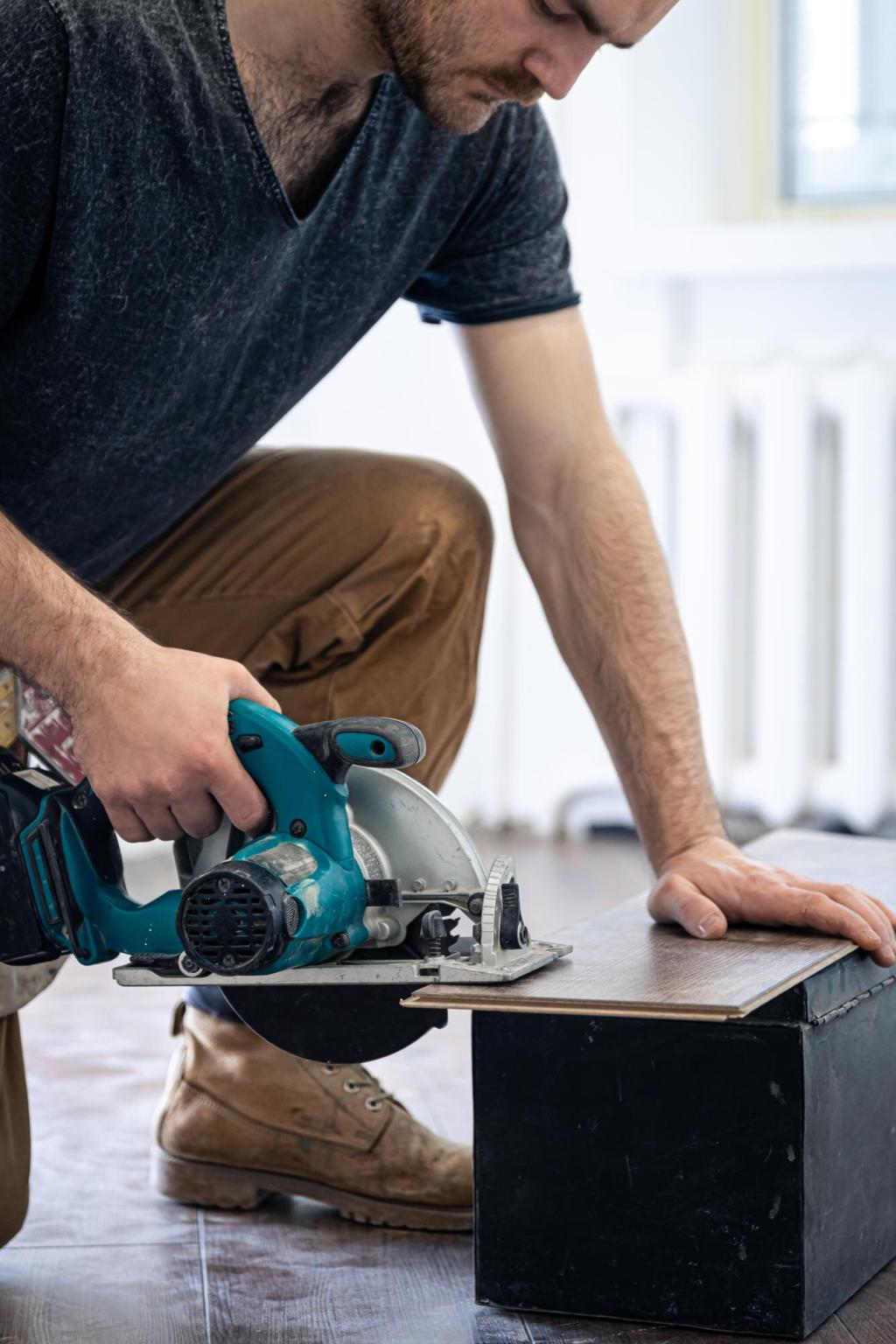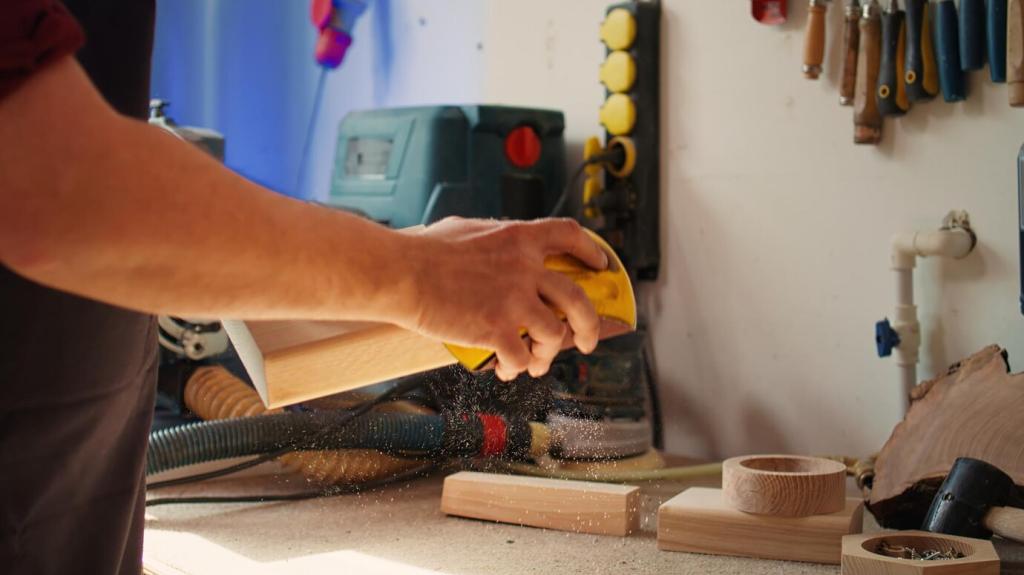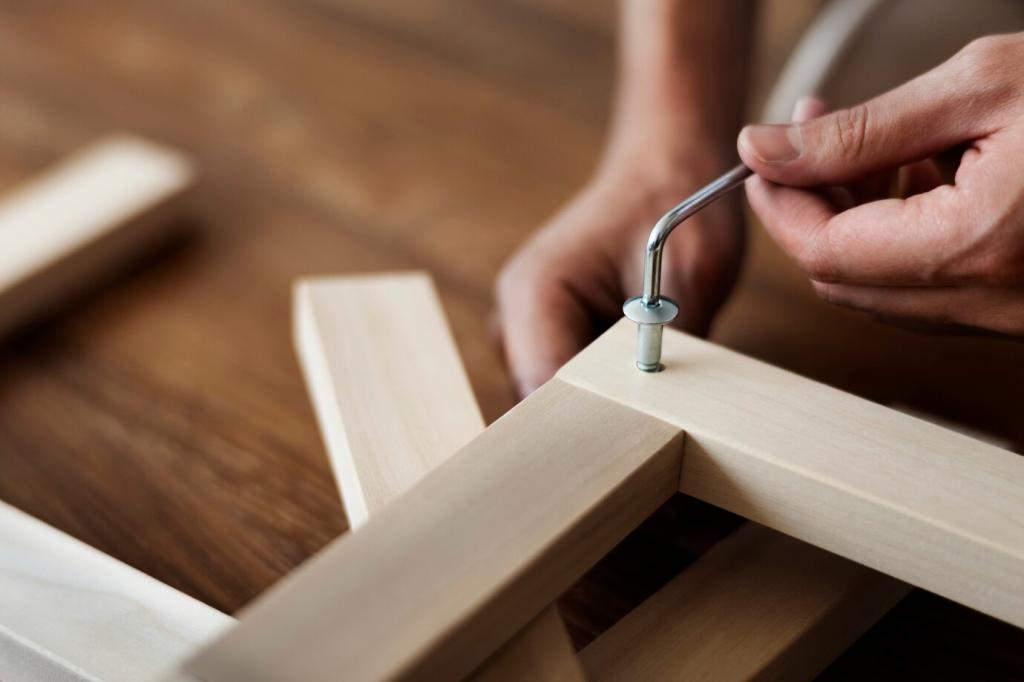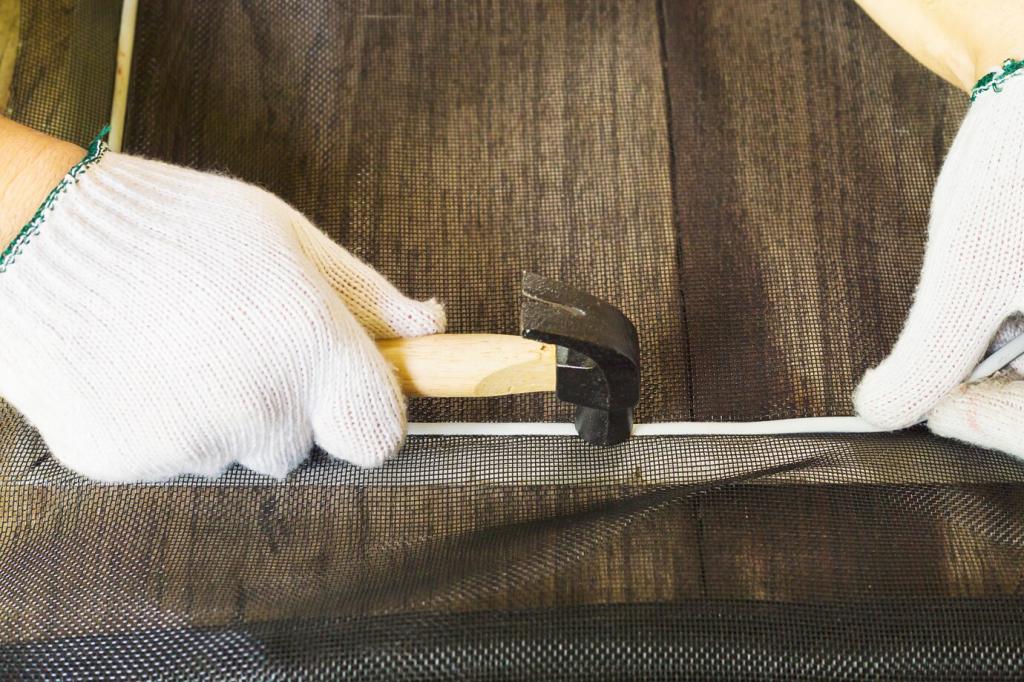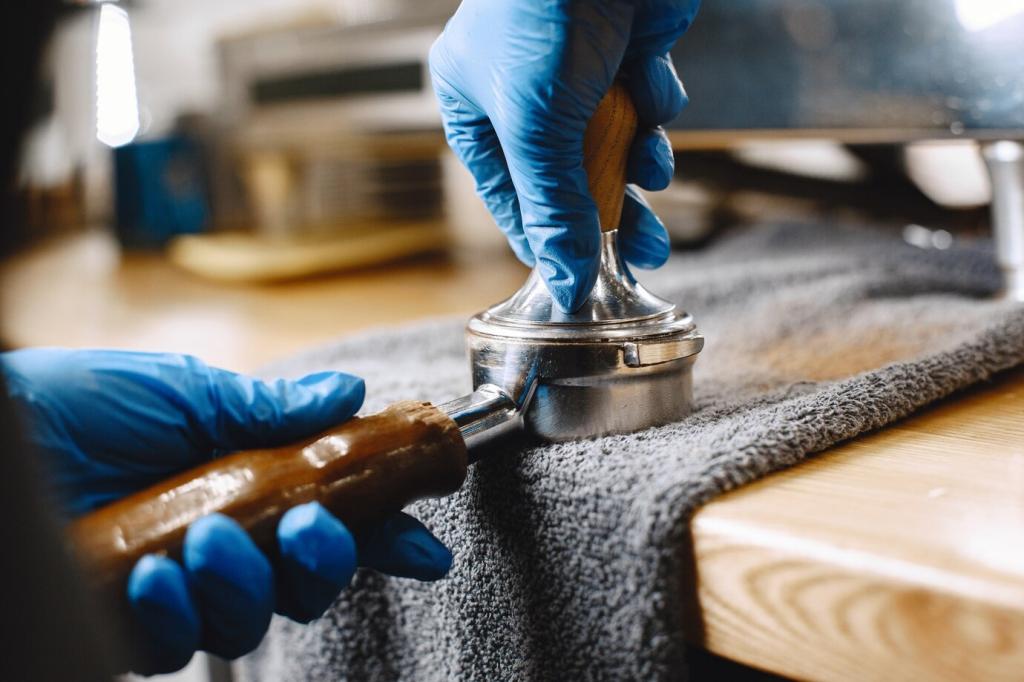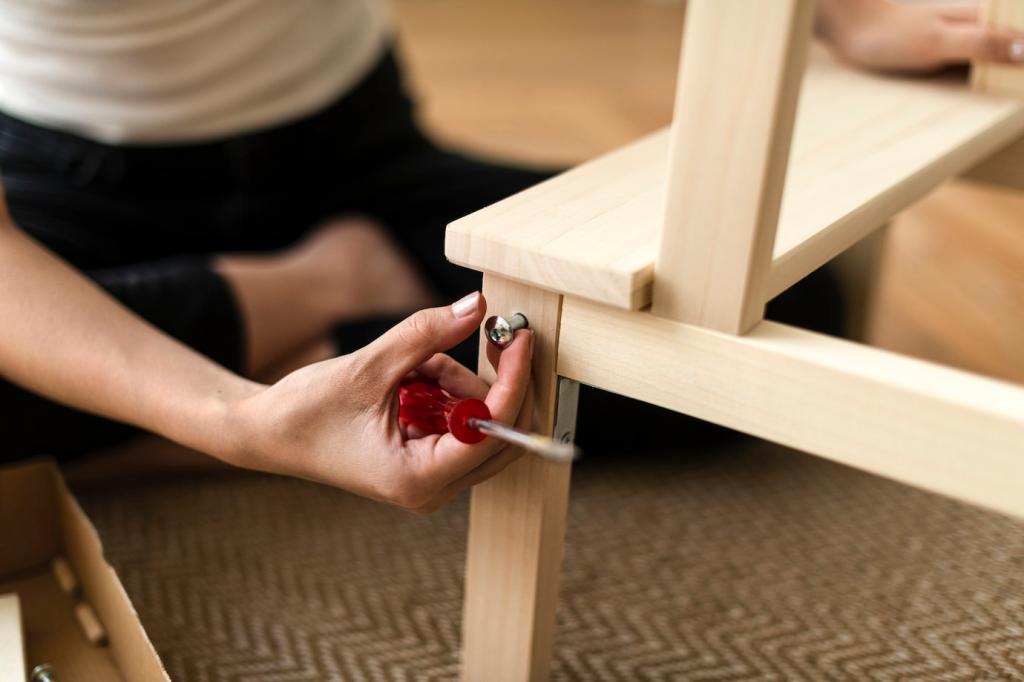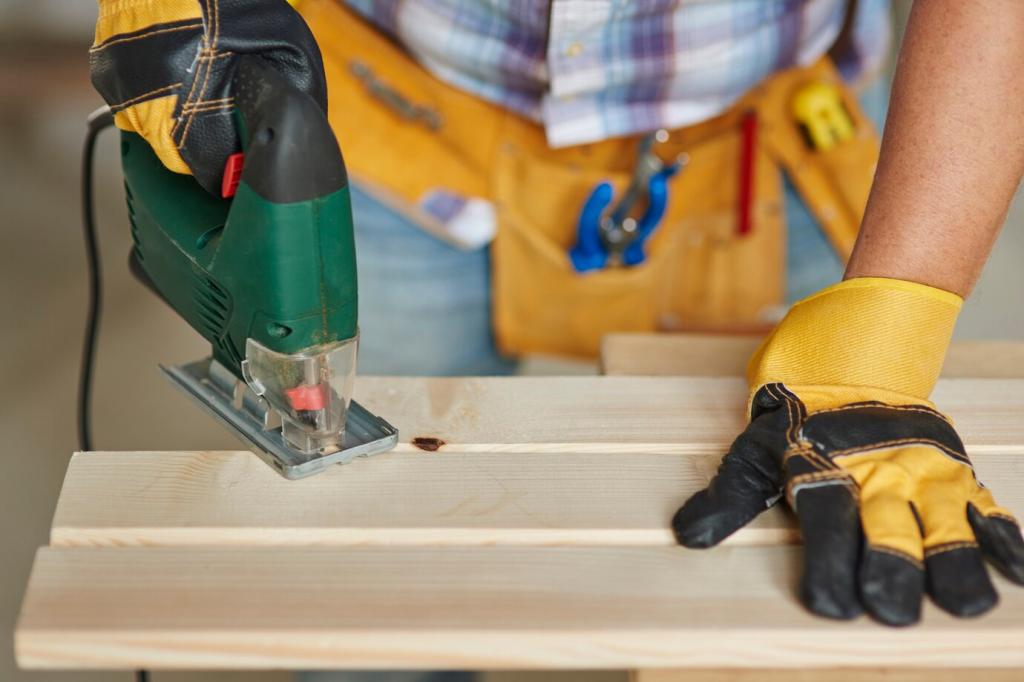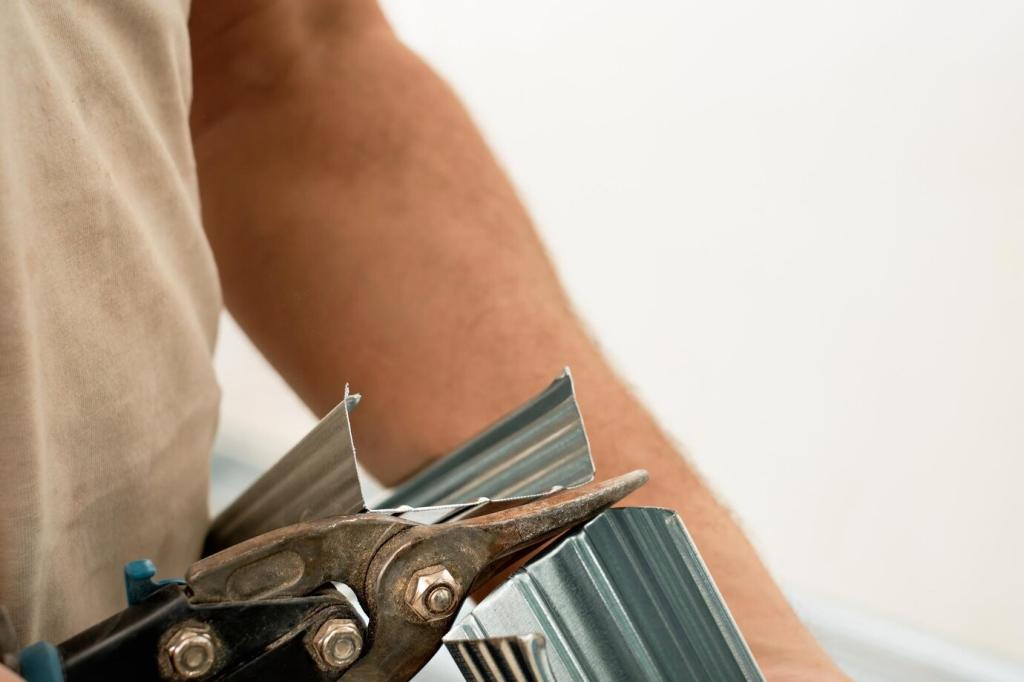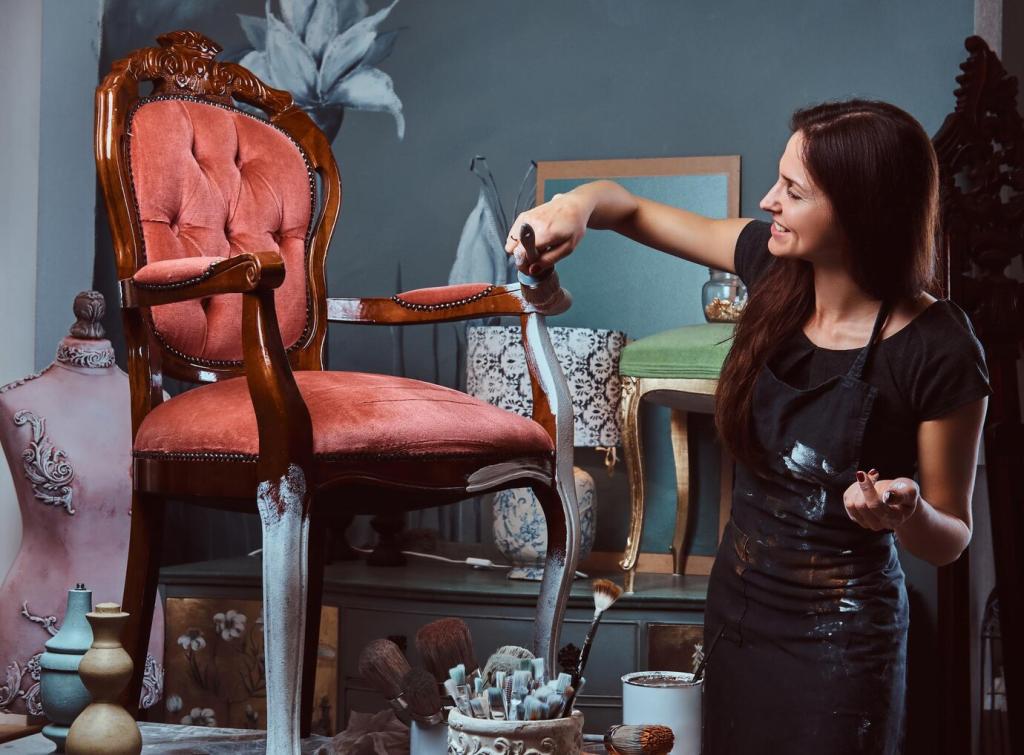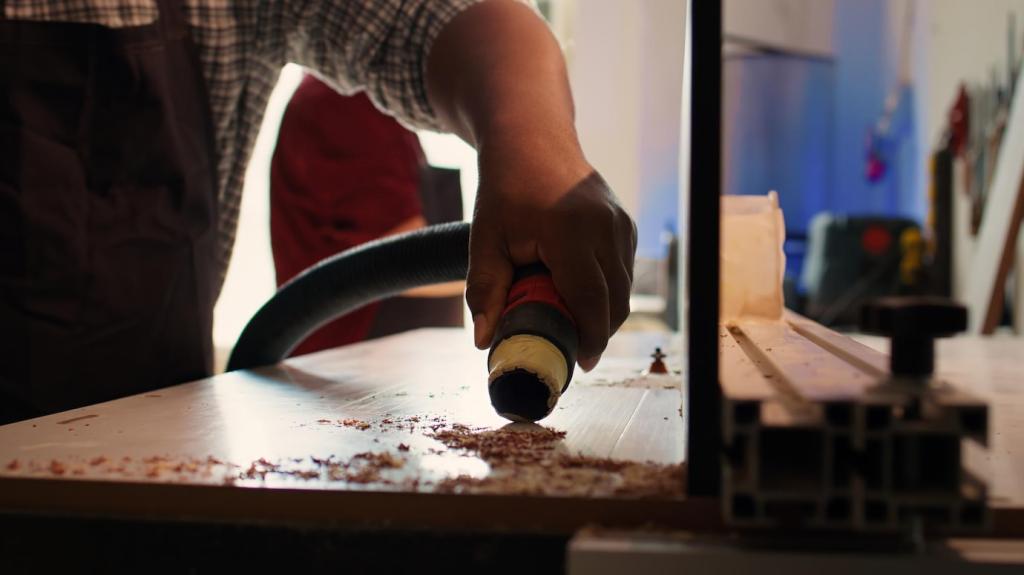Stories from the Workshop: An Heirloom Rescued
A 1950s walnut dining table arrived with loose mortise-and-tenon joints and a sun-bleached top. After patient disassembly, hide glue reassembly, and gentle cleaning, it hosted a family meal the very next week—sturdy, handsome, and ready for new stories to unfold.
Stories from the Workshop: An Heirloom Rescued
Slow work beats rushed fixes. Cleaning old glue and dry-fitting prevented misalignment; adjusting clamp pressure avoided squeeze-out stains. A breathable oil-wax finish provided repairability. These practical choices ensured the repair will age gracefully and remain easy to maintain for years.

